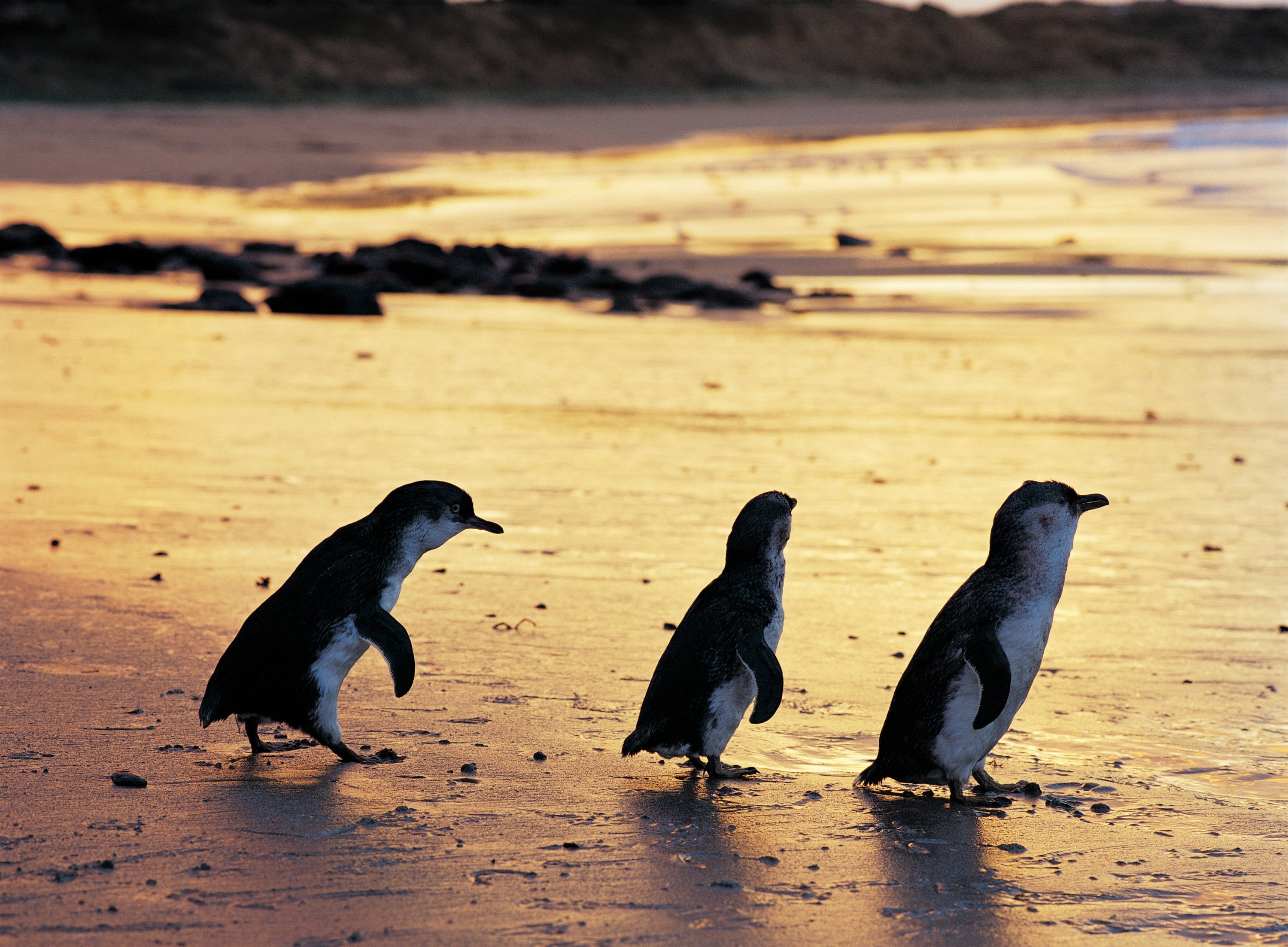© Turkuvaz Haberleşme ve Yayıncılık 2024
The roughly 1,300-kilometer (807.7 miles) distance between Australia's two largest cities, where you can see all the animals you could possibly hope to see Down Under between endlessly long beaches and charming villages, is one of the country's most fascinating regions.
Apart from occasionally opening a lazy eye, Laurie is entirely focused on taking it slow, comfortably clinging to the trunk of a eucalyptus tree. Just as koalas do – during the day.
But Laurie has another good reason to take it easy. "She's pregnant," says her keeper Liz Florence. The little joey – the endearing Aussie term for the offspring of marsupials like koalas and kangaroos – seems less into relaxing than its mother and is busy kicking and boxing inside Laurie's plushy stomach.
Koala joeys are tiny when they are born and continue to live inside their mother's pouch for another six months, drinking milk until they are strong enough to survive on their own.
Laurie is one of many koalas living in the Symbio Wildlife Park in Helensburgh, about an hour's drive south of Sydney. The park is also home to kangaroos, wallabies, echidnas (a kind of spiny anteater), red pandas, meerkats and numerous bird species endemic to Australia's east coast.
It's the first stop on our 1,300-kilometre roadtrip from Sydney to Melbourne, the two largest cities on the continent. By Australian standards, it's not a particularly long journey, but for those new to the country, it offers countless opportunities to spot some of its unique wildlife.

From Sydney, the Princes Highway winds south along the coast all the way to Melbourne and most drivers proceed at a leisurely speed - the maximum limit here is 110 kilometres per hour.
Taking it easy makes sense on this route for several reasons. Sadly, for many people, the first wild kangaroos and wallabies they will spot are likely those laying by the side of the road after being hit by a car.
Besides the risk of killing a wild animal, drivers should also be careful because the long-distance highway is dotted with unexpected potholes and there's often little space to dodge them on the predominantly single-lane drive.
Some 300 kilometres south of Sydney, turn left off Princes Highway to enter Murramarang National Park, a nature reserve where you are guaranteed to spot eastern grey kangaroos.
One camping park, Durras Lake North Holiday Park, will even give you your money back if you don't see any. Once you arrive on the premises, it becomes clear that this is a safe bet: Kangaroos seem to outnumber holidaymakers, grazing unperturbed between the cabins, especially in the morning and at dusk.
Murramarang is also a great spot for birdwatching and hiking, not to mention its pristine and tranquil beaches framed by lush vegetation. The park is home to one of the biggest stands of spotted gum trees in New South Wales, according to the state's park authority.
Back on the highway, it's another 250 kilometres along the sparsely populated east coast, occasionally passing through dense forests of Eucalyptus trees, before you cross the state border into Victoria.
On the southernmost tip of the continent lies Wilsons Promontory, a must for everyone who enjoys kayaking.
Besides kangaroos, wallabies and emus, the national park is home to a large wombat population. Spotting them is easiest during dawn or dusk when the marsupials are most active.
If you do the Prom Wildlife Walk, you might even spot a wombat during the day, as they tend to pop up there occasionally, clearly accustomed to human visitors.
So much so that they don't shy away from crawling into your tent to snack on your supplies, according to reports.
By this point, you've covered more than 1,000 kilometres, and Melbourne is much closer than Sydney.
But before you head to the city, known for its rich cultural scene, make sure to stop one last time.
Phillip Island off Australia's southern coast is only a stone's throw away from the mainland and accessible via a bridge.
A curious mixture of carefully curated tourist attractions and holiday homes, the island is another great spot to experience some of the continent's wildlife.
If you haven't had enough koalas by this point, stop at the Koala Conservation Reserve, but most people come to Phillip Island for the penguins.
Every evening, hundreds of people trek across the beach on the southwestern tip of the island to take a seat on one of the two stands set up there.
To kill the time, an employee shares some facts about the small birds everyone is waiting for to appear. Measuring some 30 centimetres, they're the smallest penguin species in the world and can only be found in Australia and New Zealand, the guide says through the megaphone.
And then, the Penguin Parade begins. Out of nowhere, small groups of penguins start jumping out of the ocean and begin marching across the beach to reach the little caves and houses that have been set up there and are cordoned off with fences.
But they don't disappear into their shelters immediately. Penguins like to exchange the news of the day first, says the guide.
And it seems they have a lot to talk about as even on the way back to the car, you can still hear them cackling on.
Last but not least ...
Phillip Island has one more species in store that we haven't encountered on the trip so far.
Head to the island's capital Cowes to catch the Kasey Lee, a catamaran that will bring you to a rock off the island that is home to the largest colony of Australian Fur Seals, according to captain John McFee. Usually, you can spot about 5,000 of them sunbathing on the rocks if the weather allows.
As much of Australia's wildlife, they are accustomed to large numbers of visitors and hundreds of them usually welcome the boat in the water as it approaches.
